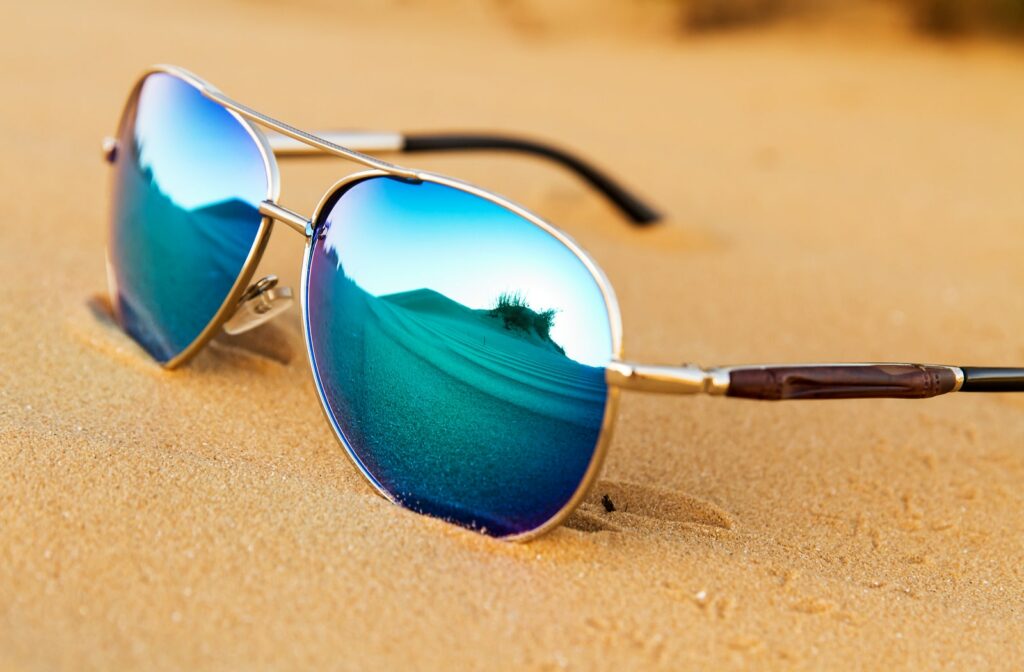You’d be surprised by how many different types of sunglasses exist. From classic ones to futuristic-looking ones, the technology has drastically improved since the invention of sunglasses.
Polarized sunglasses are one type of sunglasses providing protection from harmful UV rays. It would be helpful to know that UV and polarized sunglasses are not the same. UV glasses aren’t polarized, making it harder to see a bright light, but polarized glasses have UV protection and added protection by reducing the sun’s glare.
For the optimum protection of your eyes, it’s best to consult an eye doctor before purchasing sunglasses. Our massive range of designer fashionable polarized sunglasses has something for every member of your family.
How Do Polarized Sunglasses Work?
To understand how polarized sunglasses work, let’s first talk about light. Light scatters in different ways.
Light bounces or reflects from different objects. From the surface of uneven objects, it scatters at various angles. When it bounces off smooth objects, it scatters at one angle only. When this light reflects on your eyes, it causes glare.
Polarized glasses have an extra layer of polarizing material between each lens layer. These thin polarized layers only let through certain types of light, such as light waves that enter only one direction, vertically. Any light waves horizontally entering are canceled by bouncing off the lens, thus reducing their intensity and the brightness of the light hitting your eyes.
With a reduced glare, images can seem darker. However, with increased contrast, you still see everything clearly without straining your eyes.
Why Are Polarized Glasses Better for You
Polarized glasses aren’t just another type of sunglasses. Yes, they are fashionable, but they also serve a purpose: providing a level of defense against UV rays. Exposure to UV or ultraviolet radiation can cause damage to the eye’s tissues, including the cornea and lens.
Since sun damage happens gradually over time, polarized lenses are the best option to protect your eyes and reduce the chance of added damage by developing eye conditions and the aging of eye structures such as:
- Cataracts: develops slowly and are characterized by clouding of the lens.
- Macular degeneration: affects vision by disrupting the macula found at the retina’s center.
- Photokeratitis: also known as corneal sunburn, develops with extended periods of sun exposure and is characterized by temporary vision loss.
- Eye cancers: can develop in different parts of the eye and has the potential to spread.
- Pterygium: is a noncancerous growth that develops on the white part of your eye called the sclera and can spread to the cornea.
Without polarized sunglasses, UV damage to the eye can present with the following visible signs of aging:
- Wrinkles
- Dryness
- Sagging
- Heightened skin furrows
- Mottled pigmentation
- Loss of elasticity
While polarized sunglasses effectively block out UV rays and control glare, the shape of polarized sunglasses influences how much UV rays enter the eyes. Larger lenses are better, as they offer full coverage from the sun’s rays over the top and sides of the eyes.
You can find polarized sunglasses with different features such as side shields and UV protection. Sports sunglasses are also a popular choice because they offer additional coverage above and below the eye to protect it from glare.

What Activities Are Polarized Glasses Good For
Sun damage doesn’t only occur during the summer months. UV rays can pass through clouds and fog making polarized sunglasses ideal for winter and summer outdoor activities.
Polarized sunglasses can be life-saving when driving early morning and late afternoon when the sun’s glare is the strongest. Street lights and lights from other cars can be temporarily blinding, and it goes without saying dangerous.
Polarization does three things: it filters out glare, reduces eye strain, and clarifies your surroundings allowing for safe driving when traveling from day to nighttime conditions.
The sun is also strongest at higher altitudes and when reflecting off snow, ice, and water. Polarized sunglasses allow the wearer to see past the glare while reducing eye strain. Activities in water, snow, or ice that benefit from polarized sunglasses include skiing, snowboarding, kayaking, fishing, boating, and spending the day at the beach.
At higher altitudes, polarized sunglasses benefit climbers and hikers. Visually active people will find they can do more activities with polarized sunglasses as they won’t experience any discomfort or distortion that regular sunglasses can cause.
Polarization for Protection
Sun damage begins in childhood and continues throughout life. Find yourself or someone in your family squinting in the sun? Investing in polarized sunglasses is investing in the future of your eyes. As sunblock is to your skin, polarized sunglasses are to your eyes.
The best part is you don’t need a prescription at Pack and Bianes Optometry. Call us today to find your next pair of polarized sunglasses for running, climbing, playing sports, or even just relaxing in the sun.



